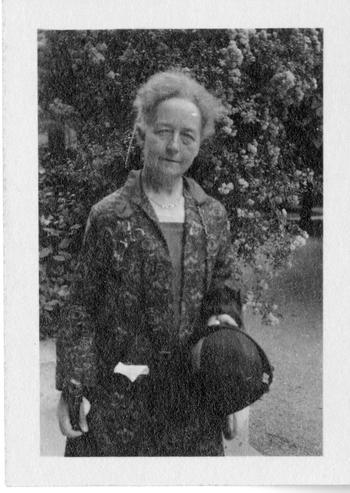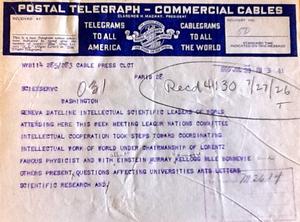Throughout March, we will be celebrating Women's History Month with new photos to the Flickr Commons and a series of blog posts about women in science from the Archives' collections.
Context matters. Tell us the "who, when, where, and why" of a photograph and suddenly (like an unexpected inheritance) the image acquires abundant meaning and intellectual capital.
 In 2012, the Flickr community helped the Smithsonian Institution Archives establish such context for a previously unidentified image of Norwegian biologist Kristine Elisabeth Heuch Bonnevie (1872-1948). Once we knew the "who," then we could easily add the "when, where, and why."
In 2012, the Flickr community helped the Smithsonian Institution Archives establish such context for a previously unidentified image of Norwegian biologist Kristine Elisabeth Heuch Bonnevie (1872-1948). Once we knew the "who," then we could easily add the "when, where, and why."
In 1911, Bonnevie had been elected as the first female member of the Norwegian Academy of Science and Letters, an event so momentous that it was praised in the New York Times as a "triumph" and "another advance for women." The following year, Bonnevie became the first woman to be appointed as a university professor in Norway and in 1916 was made director of the newly established Institute for Human Heredity in Oslo.
Ida H. Stamhuis and Arve Monsen have argued that supportive colleagues played a role in Bonnevie’s success. At a crucial venture, the historians note, Bonnevie's supervisor even dared to confront "the woman issue" directly. In the conclusion to a recommendation letter, he declared: "That the suggested applicant is a woman should not be an obstacle to her employment. Rather, it seems to me, the fact that it is still far more difficult for women than for men to reach an independent position in society, in itself urges us to make this choice."
By the 1920s, Bonnevie had become active in international science and politics. In 1922, she served as an organizer (one of a few women in that role) of the Second International Congress of Eugenics and, that same year, became (along with physicists Marie Curie and Albert Einstein) an organizing member of the International Committee on Intellectual Cooperation, part of a League of Nations effort to encourage collaboration in the sciences and humanities. She began regular visits to the United States to lecture to university and public audiences. During one such trip, she spent a few days at Vassar College, telling a reporter for the Vassar Miscellany News (October 26, 1932) that the worldwide Depression had increased the importance of the League of Nations effort: "in this time of impassable economic barriers there [is] more need than ever for cultural understanding between nations."

Such sensitivity to political and social contexts distinguished Bonnevie's life and career. After World War II, she was honored for organizing food deliveries to the Norwegian underground during the Nazi occupation. And the prestigious Kristine Bonnevie Lectures in Evolutionary Biology pay tribute every September to her worldwide scientific legacy.
The photograph of Bonnevie in the Smithsonian Institution Archives had no accompanying material and its obverse inscription was difficult to decipher. Now, however, we know that this was one of several photographs of scientists taken by journalist Watson Davis in Geneva, Switzerland, in July 1926, when he covered a meeting of the International Committee on Intellectual Cooperation.
At the Geneva meeting, Davis and biologist Vernon Kellogg had attempted to persuade Bonnevie's committee to support establishment of a European "Science Service" modeled on the successful American organization. Only "by making the new results of the intellectual part of the world part of the general thought-stream of a large part of mankind," Davis wrote, can "civilization be raised and maintained consistently upon a higher spiritual and intellectual level." The smiling, sprightly scientist that Davis photographed that summer, in fact, exemplified just such ideals throughout her career.
Related Resources
- National Library of Norway flickr photostream, includes images of Kristine Elisabeth Heuch Bonnevie
Related Collections
- Record Unit 7091 - Science Service, Records, circa 1910-1963, Smithsonian Institution Archives
- Accession 90-105 - Science Service, Records, 1920s-1970s, Smithsonian Institution Archives
Produced by the Smithsonian Institution Archives. For copyright questions, please see the Terms of Use.

Leave a Comment